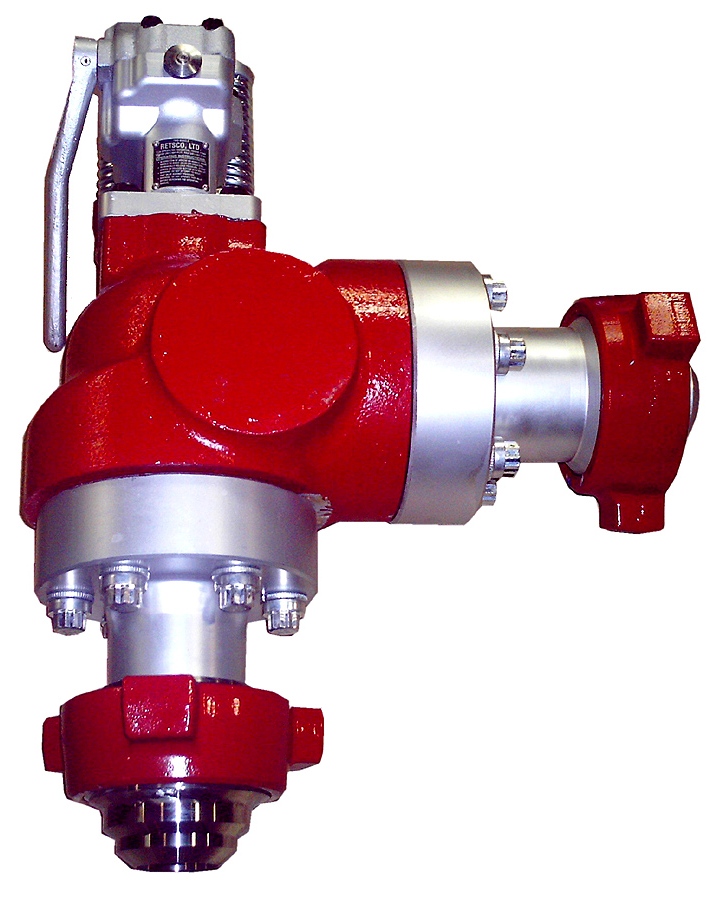Pressure Releif Valve – Pop-off valve

Pressure relief valves are installed on mud pumps in order to prevent an overpressure which could result in a serious damage of the pump and serious or fatal injury to personnel.
The discharge pressure is routed to the closer mud tank, via a 3” XXS line clamped strongly on tank side . Mud is flowing into the mud tank until line bled off, bearing in mind that minimum slope is required to avoid mud settling in pipe ( around 1 inch/meter).
Read carefully manufacturer instructions regarding setting, handling, refurbishing of such equipment.
In any cases if you don’t know/ clearly understand how to do it don’t do it, ask your supervisor. Do not start or later on , stop the job if you feel to do so .
- Pressure relief valves are set usually to 90% of the maximum working pressure of the liners in use. Read carefully manufacturer chart for pressure setting versus size of liners.
- The most commonly used pressure relief valve is 3” RETSCO TITAN type C , for mud pumps maximum working pressure of 5000psi
- Prior to installing a pressure relief valve it needs to be tested on a special bench.
- With a low pressure setting, ie, 1000psi, by adjusting the top nylon self lock nut to move on the vertical scale to get the same setting than the scale.
- If the pop off pressure matches the setting, then screw to the pressure required on the mud pump (check liner chart) and test again.
When the pressure test has been successful, put a tag (if possible laminated) on the pressure relief valve, where it is mentioned:
- The date of the test.
- The pressure of the test.
- If the pressure relief valve was reconditioned.
When/if the pressure relief valve activates due to:
Store it properly away from dust and adverse weather.( drilling store )
- Discharge line kept closed and pump started.
- Discharge pressure losses close to the maximum preset pressure.The Pressure relief valves are usually installed on a upper point of the discharge side of the mud pumps.
The pressure relief valve can be reset, if not damaged during the release of pressure. Special care should be taken if no working platform available to access the PRV.


thank you a lot for your information but can you explain how to do hydro-static test for reset relief valve because we can not going up to maximum working pressure the valve will pop in that pressure
asSalamu aleykum wa rahmatUllah
Dear Ismail,
As I understand from your comment, your pop-off valve releases pressure prior to reachign the set limit.
In this case, the best approach would be to take it off and send for maintenance and bench test. Your maintenance team can decide on the way forward.
In terms of opperations, pre-mature release will cause pressure drop in your mud system, which you can pick up temporarily by increasing strokes as an immediate mitigation.
The RPV needs to be maintained by competent personnel. Do not ignore such messages from safety critical equipment.
You never know when you might need a high pressure in the well.
For redundancy, keep a spare PRV on the rig.
Regards.
Send me quote for Popup valve and Bleed valve for Drilling mud pump.
Mud pump make : National 7P-50.
Hello Guna,
Can you please Issue LOI please with the same request detailing the below data :
– Company info
– Destination location
– Quantity
– Pump specs
to info@entirelysafe.com
derar do you want to also we are a factory manufactory oil drilling rigs equipment like mud pump liner and mud pump valve
email xhfmp01@yppetro.com
Hi
We tested pop off valve before installing on mud pump,it worked properly but whenever we installed on mud pump it failed,we set pop off on 4000 psi but it leakeages i n low pressure,pop off valve is new